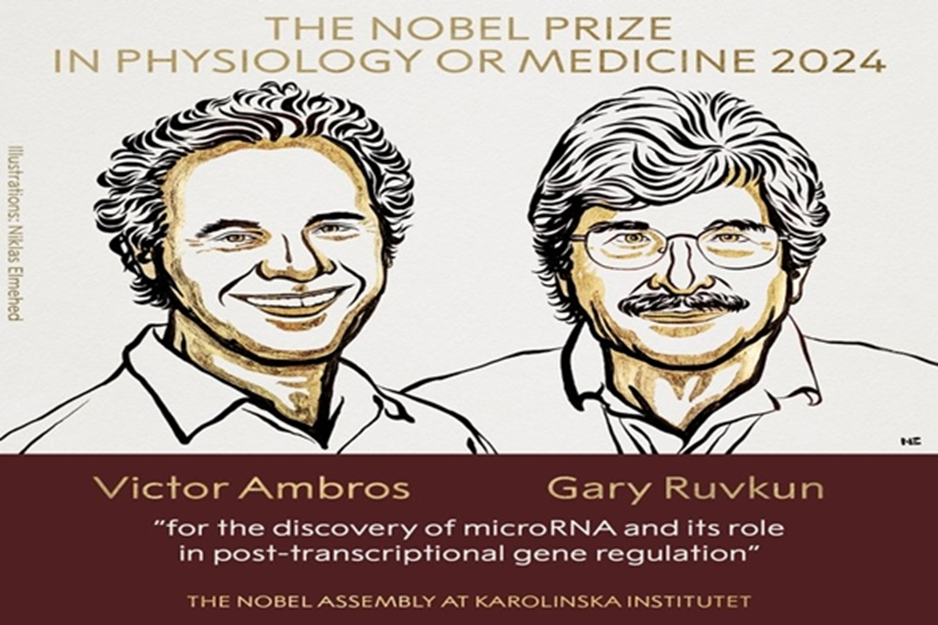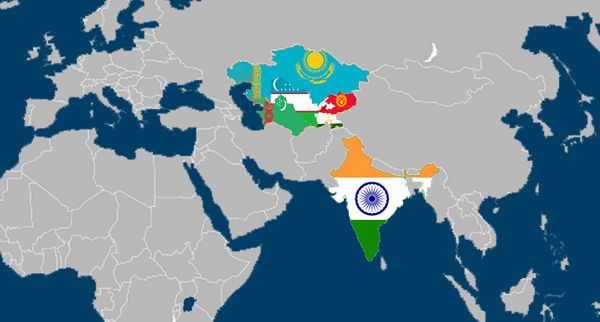- Courses
- GS Full Course 1 Year
- GS Full Course 2 Year
- GS Full Course 3 Year
- GS Full Course Till Selection
- MEP (Mains Enrichment Programme) Data, Facts
- Essay Target – 150+ Marks
- Online Program
- GS Recorded Course
- NCERT- First Ladder
- Polity
- Geography
- Economy
- Ancient, Medieval and Art & Culture AMAC
- Modern India, Post Independence & World History
- Environment
- Governance
- Science & Technology
- International Relations and Internal Security
- Disaster Management
- Ethics
- Current Affairs
- Indian Society and Social Issue
- CSAT
- 5 LAYERED ARJUNA Mentorship
- Public Administration Optional
- ABOUT US
- OUR TOPPERS
- TEST SERIES
- FREE STUDY MATERIAL
- VIDEOS
- CONTACT US
2024 Nobel Prize for medicine
2024 Nobel Prize for medicine
08-10-2024

The 2024 Nobel Prize for Medicine has been awarded to Victor Ambros and Gary Ruvkun for their groundbreaking discovery of microRNA, tiny molecules that significantly influence gene regulation.
- This research has advanced our understanding of how genes function, enabling the evolution of complex organisms.
Key Highlights of the Award
- The Nobel Committee acknowledged Ambros and Ruvkun for their discovery of a fundamental principle governing gene activity regulation, which has implications that extend across hundreds of millions of years of evolution.
- MicroRNA represents a vital mechanism in gene regulation, shedding light on cellular functions in diverse organisms, including humans.
Background of the Research
Why Study MicroRNA?
- Gene Regulation: Gene regulation is crucial for ensuring that specific genes are activated or deactivated according to the needs of different cell types. For instance, nerve cells utilize genes that facilitate signal transmission, while muscle cells activate genes necessary for movement.
- Mechanism of Action: The process of gene regulation allows cells to effectively "choose" which genes to express, thus determining their unique functions despite having identical genetic material.
Importance of Gene Regulation
- Genetic information is stored in DNA and transcribed into mRNA, which directs protein synthesis. These proteins are essential for various bodily functions, from muscle contractions to nerve signaling.
- Faulty gene regulation can lead to severe diseases, such as cancer, diabetes, and autoimmune disorders. Understanding gene regulation is key to developing treatments for these conditions.
Historical Context
Early Discoveries
- In the 1960s, the discovery of transcription factors—specialized proteins that bind to DNA and regulate gene expression—marked a significant leap in understanding gene regulation.
- For years, it was believed that the role of transcription factors comprehensively explained gene regulation.
Discovery of MicroRNA
- In 1993, Ambros and Ruvkun published their findings, introducing a new layer of gene regulation through microRNA, which had not been previously anticipated.
Discovery Process of MicroRNA
Initial Studies
- Working under Nobel laureate Robert Horvitz, Ambros and Ruvkun studied the C. elegans roundworm, which possesses various cell types analogous to larger organisms.
- They focused on two genes: lin-4 and lin-14, which are crucial for cellular maturation timing. Observing mutant worms led them to suspect that lin-4 inhibits lin-14.
Breakthrough Findings
- After establishing his lab at Harvard, Ambros identified that lin-4 produced a tiny RNA molecule that did not code for proteins but inhibited lin-14's activity.
- Ruvkun simultaneously investigated lin-14 and found that lin-4 did not prevent mRNA production; instead, it blocked lin-14 from synthesizing its protein.
Mechanism of Action
- The short RNA from lin-4 matched a specific region of lin-14’s mRNA, allowing it to attach and effectively inhibit protein production from lin-14.
- This breakthrough revealed a novel regulatory mechanism by which genes can be controlled through microRNAs.
Evolution of the Research
- Initially, the discovery was overlooked, as many believed microRNA mechanisms were limited to C. elegans.
- The landscape changed in 2000 when Ruvkun's team identified let-7, a microRNA found across multiple species, including humans. This sparked a wave of research that uncovered hundreds of microRNAs.
- Today, it is recognized that microRNAs play an essential role in gene regulation across nearly all multicellular organisms.
Conclusion
The awarding of the 2024 Nobel Prize for Medicine to Victor Ambros and Gary Ruvkun underscores the profound impact of their discovery of microRNA on our understanding of gene regulation. This work has not only elucidated fundamental biological processes but also opened new avenues for addressing diseases linked to gene regulation dysfunction. Their research is pivotal in the ongoing exploration of genetic mechanisms that govern life across diverse organisms.
Must Check: Best IAS Coaching In Delhi
UPSC Prelims Result 2024 Out: Expected Cut Off & Other Details, UPSC Prelims 2024 Answer with Explanation, Daily Prelims Quiz, Daily Current Affairs, MONTHLY CURRENT AFFAIRS TOTAL (CAT) MAGAZINE, Best IAS Coaching Institute in Karol Bagh, Best IAS Coaching Institute in Delhi, Daily Mains Question Answer Practice, ENSURE IAS UPSC Toppers, UPSC Toppers Marksheet, Previous Year Interview Questions, UPSC Syllabus




